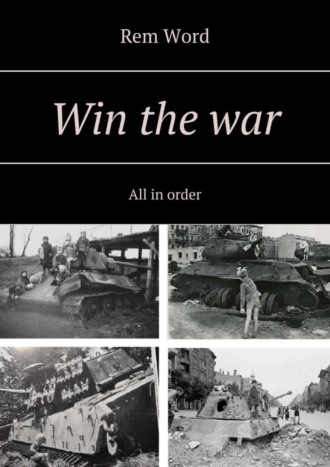
Полная версия
Win the war. All in order
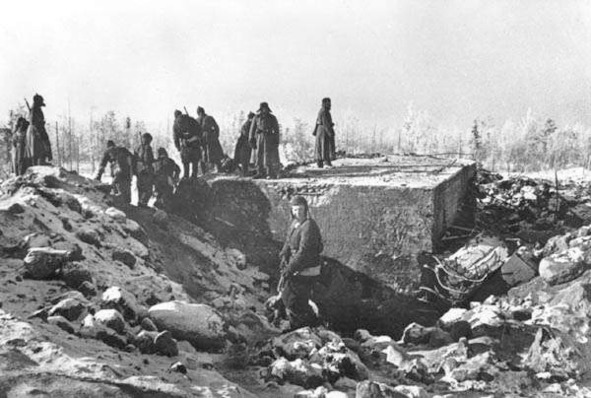
Among the advantages in combat training of troops, after such a harsh school, is the abolition of the institution of political commissars, the experience of breaking through long-term fortifications, the winter war as a whole, and the return to the production of a submachine gun (PPD). Cons, in addition to the most severe losses – the loss of at least some prestige on the world stage. The German government understands that it is fully capable of achieving comprehensive success in the war against the «colossus on clay feet.» The sight of a surviving Soviet soldier in a camera. On the ruins of the Finnish DotA, spring 1940
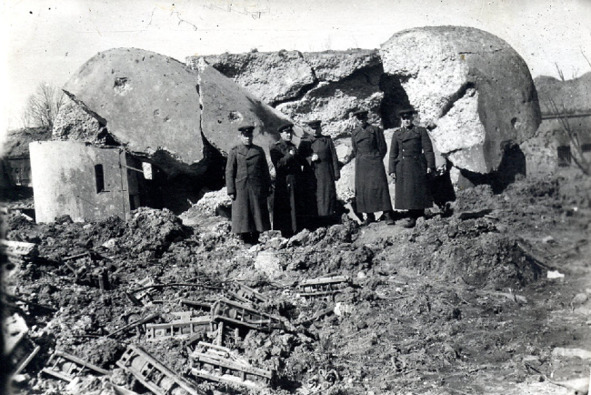
Soviet officers pose against the backdrop of «Karelian sculpture.» April 1940
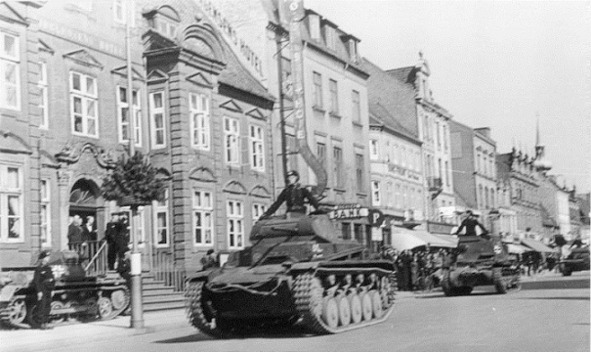
…Denmark and Norway are threatened to capture two centers of power at once: England and Germany. Denmark is leaning towards the protectorate of Germany. The leaders of the country (ethnic Germans, as a rule) give the order not to resist the invasion. It will take place in March 1940, and costs the lives of thirteen Danish and two German soldiers. Reich acquires a reliable supplier of agricultural products, a half dozen warships and a six-thousandth volunteer corps. Photography – German T-2 tanks on the streets of Copenhagen
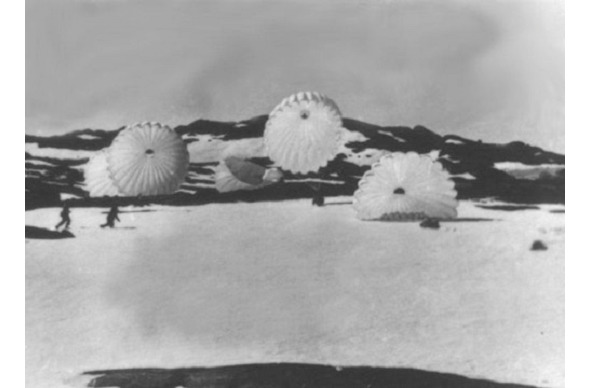
In April 1940, the German warships attacked Norway, which had received help from the British, and by June 16 of the same year, with the support of airborne assault forces, captured it. The irretrievable human losses of opponents are approximately equal. The Norwegians – 1,400 people, as well as 60,000 prisoners, the British 1,800, the French and Poles 500. Wehrmacht loses about 4,000 soldiers and officers. Allied forces lose a total of 15 warships, including the aircraft carrier. Germany – 34 large and 10 small. These losses make the landing operation to the UK quite doubtful. As a result of the submarine war, England loses 485 ships, which is one third of the entire merchant fleet. Germany exchanges them for their 9 submarines.Photography – German paratroopers on the rocks of Norway
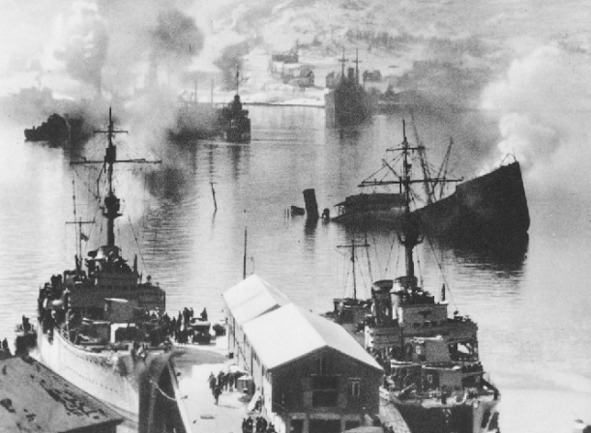
Harbor of the Norwegian city of Narvik, after the battle of the British with the German fleet
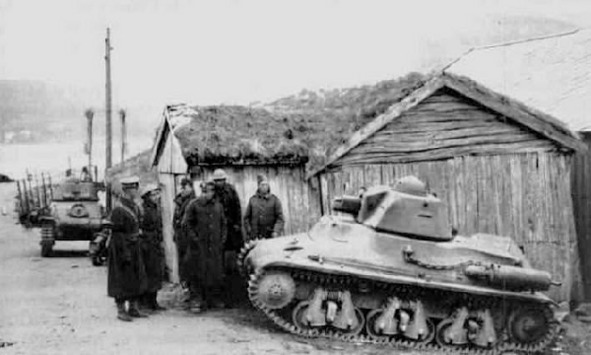
The French Renault tanks, delivered to the Norwegian allies, despite their good performance characteristics, still seem frivolous. Narvik, 1940
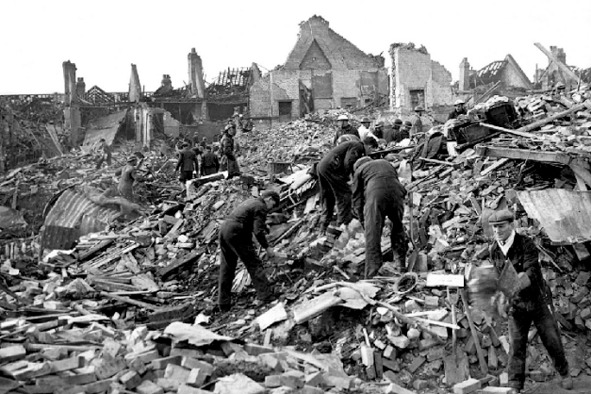
Not very beautiful on May 10, 1940, Belgium and the Netherlands receive from the German command an ultimatum reproaching the violation of neutrality – the passing of British aircraft over their territory. The note calls on Holland not to hinder German troops entering the country, not as enemies. However, by this time the German soldiers are already on the land of the Netherlands. The government of the country dams and cheese requests help from the British and French. Their expeditionary corps are nominated to establish contact with the Dutch. German paratroopers capture a strategically important bridge at Rotterdam. This move allows German tanks to block large Dutch infantry units. Under the threat of bombardment of the capital, there is a demand for complete surrender. The ultimatum is accepted, however, as a result of the error, or the deliberate action of 60 Heinkel 111 bombers dropping 97 tons of bombs on Rotterdam. Holland surrenders five days after the declaration of war. Losses of the Dutch side: 2330 soldiers and officers, 70 aircraft, (68 «Typhoon» lose the Air Force of England), as well as 2000 civilians. Germany – 3000 military, 275 aircraft. The photograph shows the outskirts of the Dutch Rotterdam after the bombing.
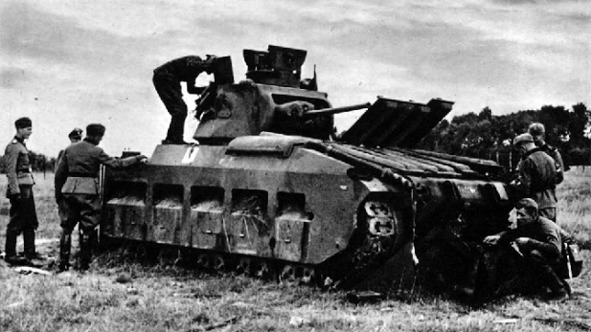
The idea of the ambitious German officer Erich von Manstein – to attack the superior in number (4 million versus 3 million Wehrmacht) Anglo-French army through the mountainous Ardennes, from the north, by the few cohesive tank units, is found in the Fuhrer.Photography – German soldiers inspect the British tank "Matilda", shot down during the Ardennes operation

The battle continues to unfold in neighboring Belgium. Here, on May 10—11, French, British, Belgian troops and Wehrmacht units converge. The first really grand operation of the Germans begins almost a failure. In the vicinity of Luxembourg, a motorized column of 41,000 units of equipment, a bumper to the bumper, gets into a 250-kilometer traffic jam. However, the bewildered allies never bombard this light target. Finally, 1,100 tanks break away from infantry clusters and break through mountain serpentines into Belgium. Three days later, steel cars, with crews tightly tucked in pervitin, almost seamlessly cross the borders of France.Photography – German scouts are moving along the street of the destroyed French city
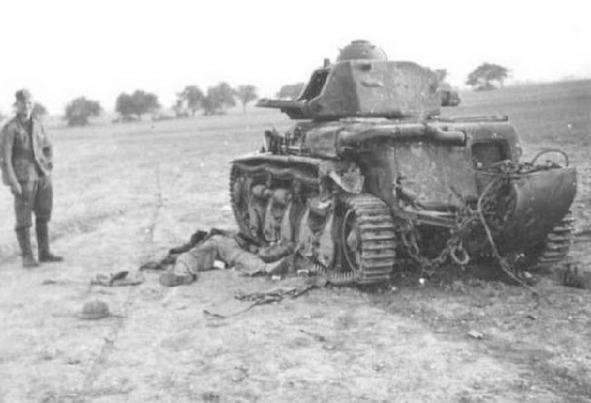
From the battles of this period, we note a large tank battle at Annu. 623 German (Panzer 1—2) and 415 French (Renault, Hotchkiss) tanks converge here. The shortcomings of German armored vehicles are revealed – thin, 14, 5 mm. armor and weak 20 mm. a gun. They are opposed by 45 mm. armor and 37 mm. the guns of Hotchkiss, whose crews, however, consist of only two people. The tactics of the panzerwaffe – to beat with a steel fist, with a clear coordination on the radio and a clear goal, shows superiority over the manner of the opponents to place the tanks in a shaky line. The armed forces of Belgium withdraw from the fight on May 28.The photo shows the dead French tanker near the Renault tank, France, 1940.
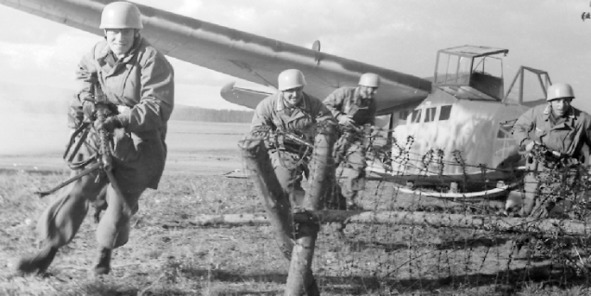
During offensive operations of the Wehrmacht in the Benelux countries, and in France, in addition to parachute assault forces, towed gliders are actively used. This method of landing is associated with the loss of the aircraft, but allows the fighters to remain in the group with the cargo. It seems that war for these soldiers is just such an adventure.
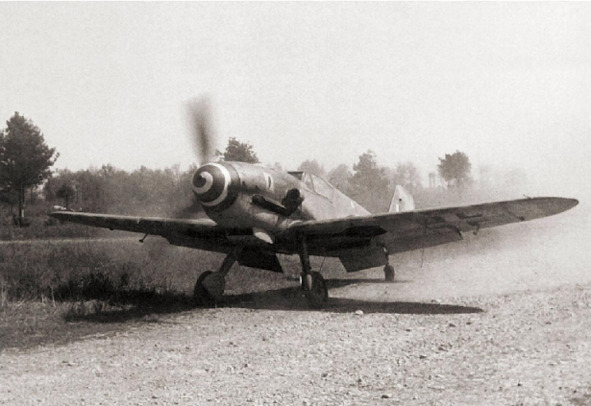
German fighter «Messerschmitt Focke-Wulf 190». The basis of German domination in the air of the first half of World War II. The take-off weight is 2200 kg. The maximum speed after replacing the engine in 1938 is 570—580 km. h. Armament – four 7.92 mm. machine gun, or two machine guns and 20 mm. a gun. During the war years produced 33,000 units (the most massive combat aircraft in history).
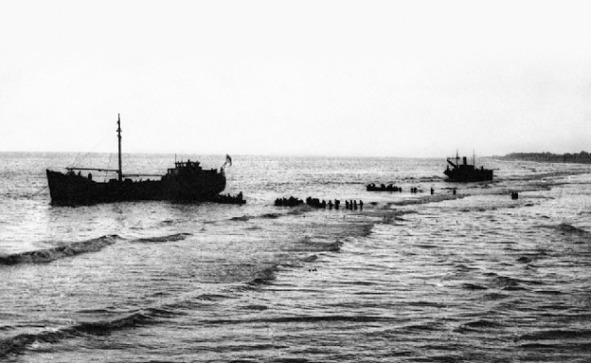
Battle sites are shifted to the French Dunkirk. Promotion of the German Panzerwa is ruined by rugged terrain. Also, they do not seek to enter the zone of the British ship artillery. Surrounded by the Anglo-French troops, taking advantage of the weather that interferes with the actions of aviation, they are evacuated by sea, leaving the enemy with all heavy equipment. The idea to create a springboard, a thorn in the body of Continental Europe, is not considered. Photography – evacuation of British soldiers on ships coming close to the shore. Dunkirk, June 1940
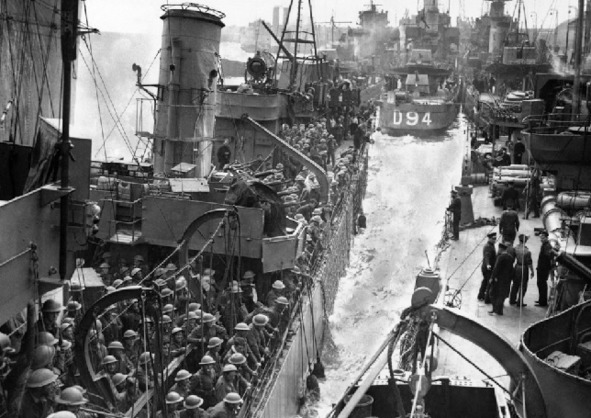
taly is entering the war on the side of Germany. Although its three hundred thousandth army is not successful, it finally demoralizes the French. And, on June 21, in the Compiegne Forest, in the same place where an armistice was signed 20 years ago, France’s capitulation is announced. The loss of Belgium: 6,000 people irrevocably, 202,000 prisoners, 112 aircraft. France: 84,000 killed, 1.8 million prisoners (they are sent to forced labor in Germany), 50 aircraft. United Kingdom: 68,000 people, 1,000 aircraft, 64,000 units of vehicles. And, victorious Germany – 18,000 soldiers and officers according to German data and 45,000 according to the calculations of English historians. Luftwaffe lose 432 aircraft. In addition to the French economy, Germany gets 2,000 battle-capable tanks (used against partisans or converted into self-propelled guns), 1,400 aircraft, and seven thousand French volunteer legions. Photography – rescued «Tommy» move to the shores of Albion, Pas-de-Calais, June 1940
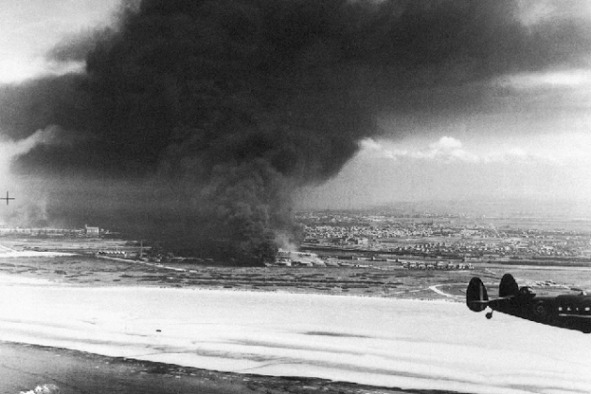
Burning storage tanks Dunkirk. Exodus ends. On the right is a British aircraft patrol
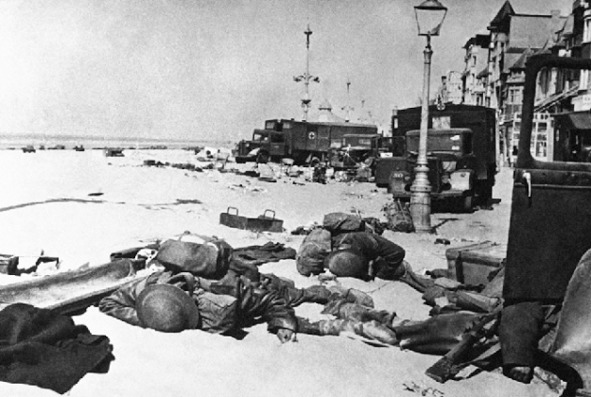
Dunkirk through the lens of a German camera
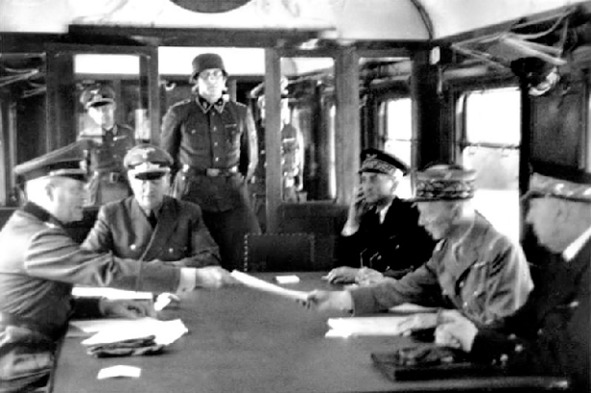
The wagon in Compiegne Forest (France), the one in which 22 years ago was signed a humiliating world for Germany. The capitulation of France, or, more precisely, its northern half, is taken by the once glorious Marshal Petain, the hero of the First World War (right in the center)
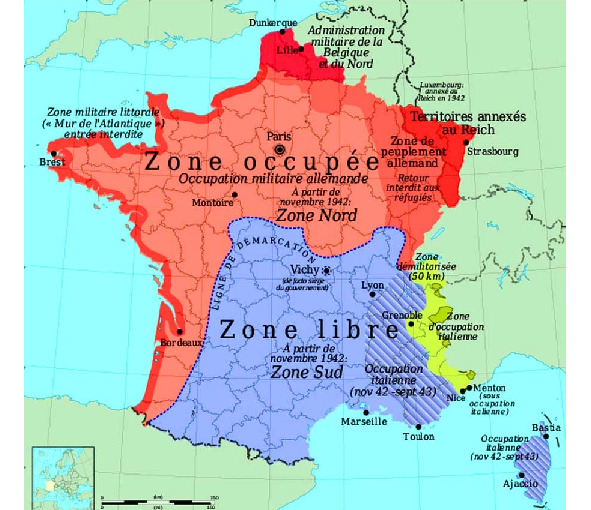
The occupation of France, Germany and Italy, 1940. The main part of the French fleet, maintaining a high degree of combat effectiveness, is based in Toulon. The resort town of Vichy becomes the capital of the government

German children and soldiers welcome the success of Nazi Germany, 1940
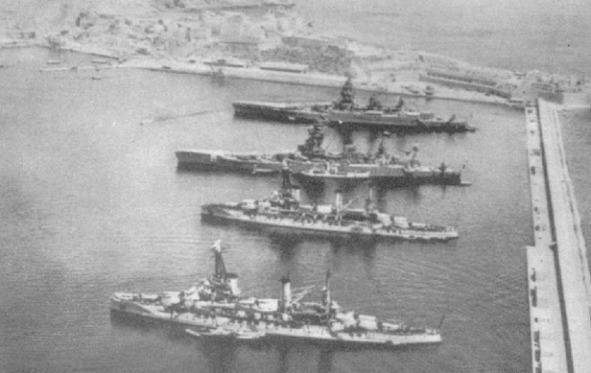
On the night of July 3, 1940, British units seize French ships in British ports. Not without bloody incidents. On both sides, several people die. The meaning of the operation is not to allow the French, if they wish, to transfer the fleet to the Germans (or go over to their side). Similar actions are being taken in all the bases of the Mediterranean Sea, where the ships controlled by Vichy are located. In the Egyptian port of Alexandria, the initiative of the British captain-negotiator allows you to come to a compromise. In July 1943, the battleship, four cruisers and several destroyers joined the Anglo-American allies. But, in other places, everything is much more complicated.
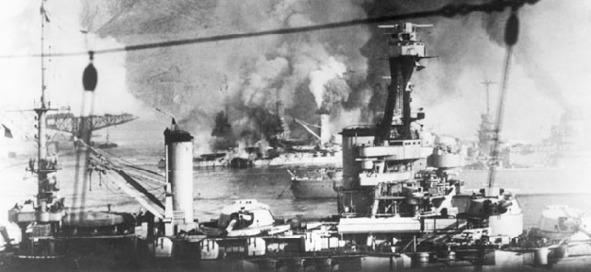
To neutralize part of the French fleet, stationed in the harbor of Mers-el-Kebir (Algeria), the British equip a squadron of three battleships, two cruisers, an aircraft carrier and eleven destroyers. In the ultimatum filed by the French, there is a requirement to go to the ports of the West Indies, or to scuttle ships. The British commander orders to open fire at 16.45, without waiting for the expiration of the submitted note. Shells cover the crowded, anchored battleships, cruisers, destroyers, navigation vessels and submarines. Three battleships are hard to repair damage and are stranded. The survivors are finished off by torpedo bombers from the aircraft carrier Ark Royal. One battleship, the newest Strasbourg, took advantage of the lull and the help of the destroyer who shot part of the minefields, leaving for Toulon. On the way, this ship meets, almost aboard, an almost defenseless now British «Royal Royal». However, the captain orders not to open fire. The British do not appreciate such a gift and send six «Suordfish» to «Strasbourg». Anti-aircraft guns left without damage to the battleship bring down two attacking aircraft
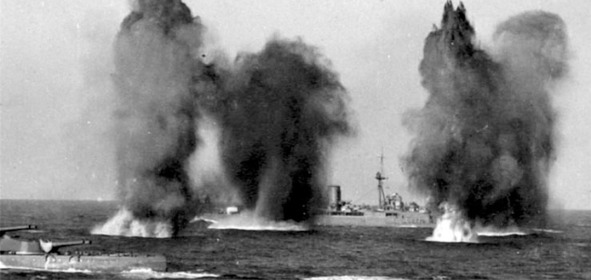
Similar battles will take place in Dakar (French North Africa, now Sinegal). An attack on a group of ships in the West Indies, the island of Guadeloupe, prevents the personal intervention of the President of the United States, Franklin Roosevelt. In two days of the «Catapult» France loses 1,400 people, England -2 pilots and 6 aircraft. Tens or hundreds of thousands of French become collaborators with a light heart. Photography – ships breaking through from Mers-el-Kebir harbor
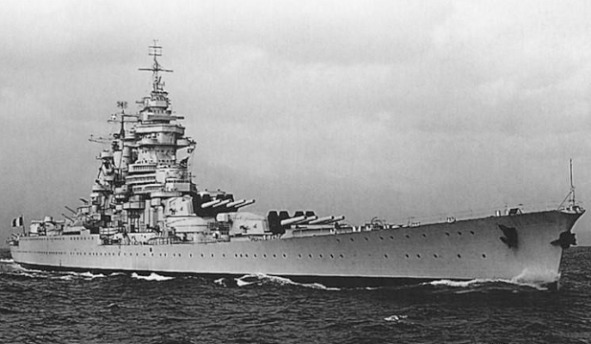
The battleship Richelieu, seriously damaged in the port of Dakar, is being redeemed from France by the US government. Powerful 380 mm. guns are reamed to the American standard, and after this war they shoot off the coast of Burma. But the most interesting is contained in the holds of this halo-covered secret ship. Gold of the French National Bank, also Poland, Belgium and the Netherlands, for 2.5 billion dollars of that time. What happens to the precious metal further, and by what agreement it falls into the hands of Americans, we do not know the details. It is believed that in 1945 its monetary equivalent is transferred to European countries, as part of the Marshall Plan, as a loan for exclusively American goods.
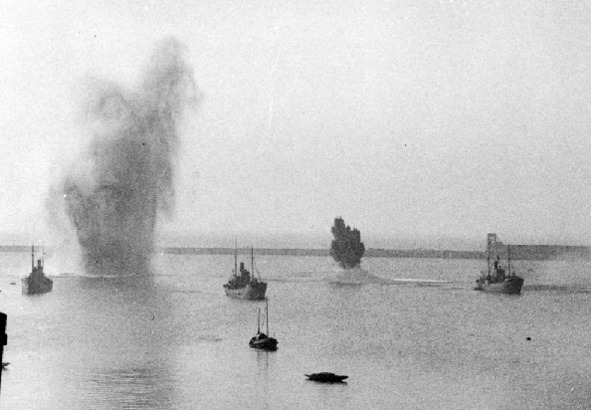
From July 10 to October 30, 1940, Britain and Germany lead a fierce battle in the air. England loses a little more than a thousand airplanes, the enemy loses 1,800 winged cars. In Western historical literature, a series of air battles are considered to be the greatest battle that will be remembered for thousands of years. The air battle for the Kuban (RSFSR, 1943) is characterized by similar numbers of aircraft shot down, but remains in the shadows. In Soviet and Russian historiography, the air battle for Britain is also a minor episode among the epic land battles on the territory of the Soviet Union. Be that as it may, Germany is losing interest in Britain and concentrates on preparing for an invasion of the USSR. Photography – Luftwaffe bombers raid on the English port of Dover, 1940
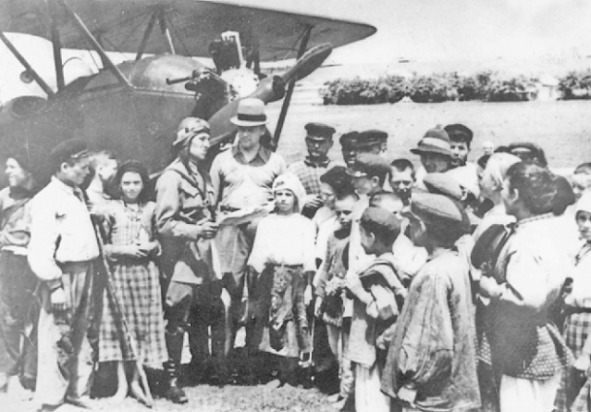
The USSR government sends an ultimatum to the Romanian government demanding the return of Bessarabia (the former Russian province, rejected by Romania in 1920) and Northern Bukovina as compensation for the exploitation of the population of Bessarabia. It takes place on June 27, 1940. A few hours before the Soviet invasion, the Romanian king accepts the conditions. The resulting land is divided between Soviet Ukraine and Moldova. The USSR receives 3.7 million people and 50 thousand square meters. km territory. 28 thousand heads of wealthy families are deported to Siberia
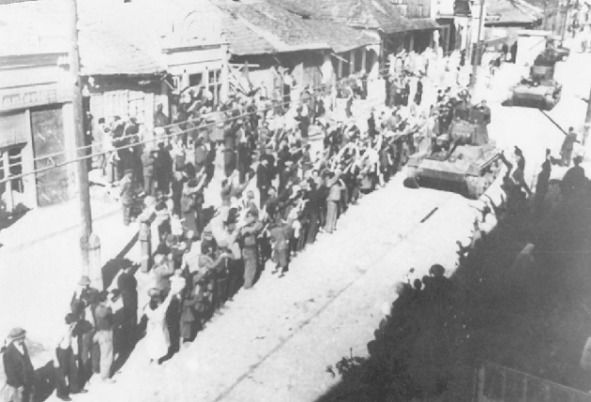
The population of Bessarabia, indeed, has suffered humiliation from the Romanian authorities, it turns out loyal to the Soviet government. Ethnic Romanians and Ukrainians (85%) of Bukovyna, 0.8 million people who did not experience such a relationship, belong to annexation without enthusiasm. The photograph shows a parade of Soviet troops and a festive demonstration in Chisinau, July 3, 1940.
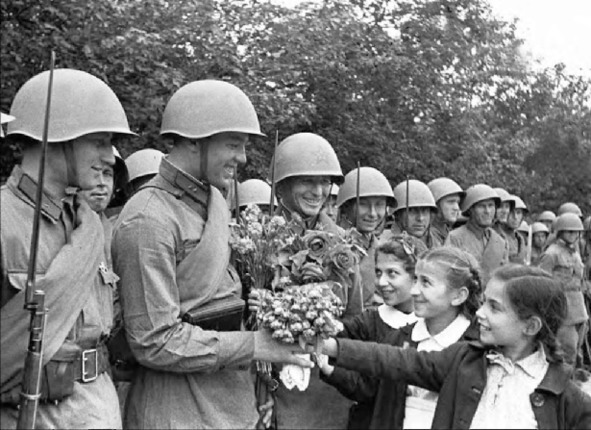
Representatives of the young generation of Bessarabia (Moldavia) present flowers to the soldiers of the Red Army
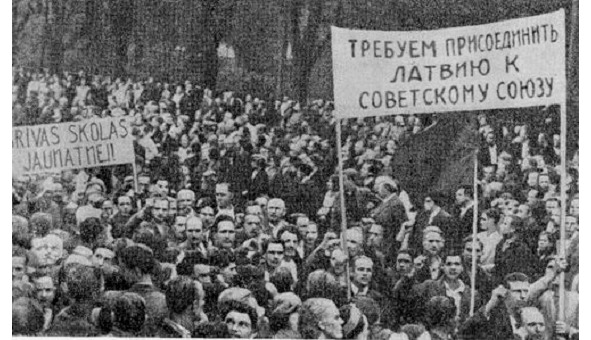
In October 1940, the Soviet Union proposed to Estonia, Latvia and Lithuania, according to the mutual assistance agreement, to place on their territory a military contingent of 25,000 people, for protection against Germany. It is already clear that the Red Army is inclined to achieve its goals, despite the loss. Two weeks later, the governments of these countries are accused of conspiring with Germany (which is partly true), repressing foreigners and shifting. In the summer of 1940, according to the results of the popular vote, the republics form communist governments and adopt the Declaration of entry into the Soviet Union. These decisions are immediately approved by the Supreme Soviet of the USSR. According to the documents of the NKVD dated June 17, 1941, 5,663 people were imprisoned in Lithuania, mainly police officers and «classical capitalists», 10,186 people were relocated, 5,624 and 9,547 Latvia, respectively, 3,179 and 5,979 Estonia. Lithuanian President Antanas Smyatona emigrates to Germany, then Switzerland and the United States. His Estonian colleague Konstantin Päts is deported with his family to Siberia, gets 25 years of camps, has been detained in a prison psychiatric clinic since 1942, dies there in 1956 with the pro-Soviet government, and in particular, publishes the «Pest Control Act.» Later, he begins to realize the situation and asks the Kremlin for permission to travel to Switzerland. As a result, he enters the camp of the NKVD near Krasnovodsk (Turkmenistan), where, in 1942, he dies. Photography is a demonstration of the population of Latvia for joining the Soviet Union. June 1940
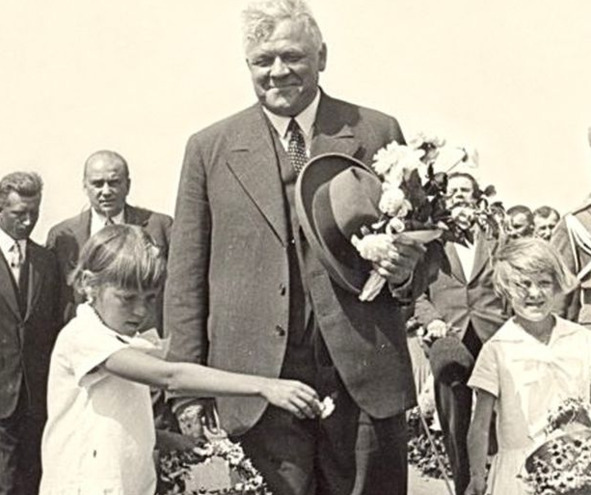
Karlis Ulmanis, Head of Latvia
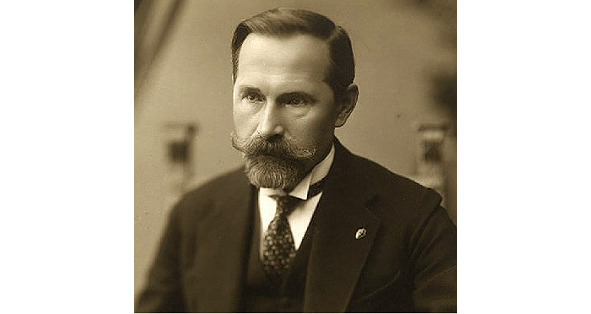
Anastastas Smyatona, the prudent head of Lithuania

Konstantin Päts, head of Estonia
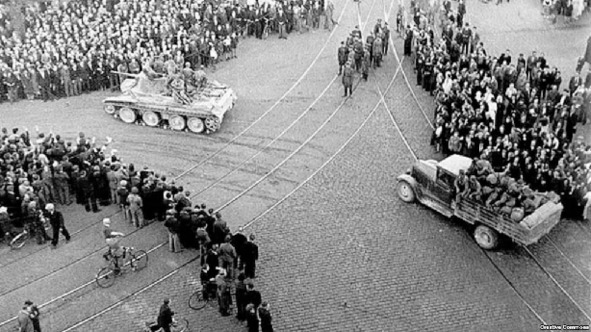
Parade of Soviet troops in Riga, autumn 1940
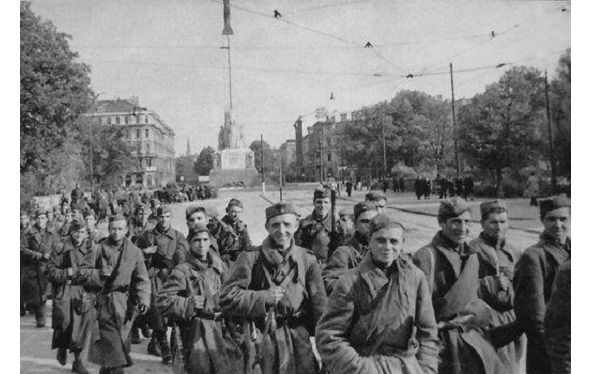
Soviet soldiers in Riga, 1940
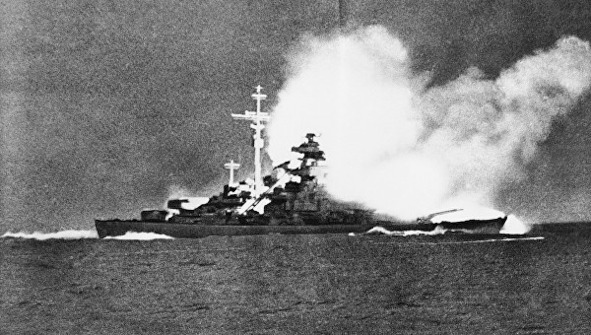
Since July 1940, the battle for the Atlantic has intensified. Germany receives new naval bases. France comes out of the war, and fascist Italy, on the contrary, enters it. The photograph shows the death of the British heavy cruiser «Hood», the morning of May 24, 1941. Until then, the ship was marked by the holding of Atlantic convoys and the flooding of the battleship «Brittany» during Operation Catapult. Thousands of French sailors leave their lives at once. Now the Hood, in a group of battleships and 6 destroyers, goes to intercept the German battleship Bismarck and the heavy cruiser Prince Eugen. The British cruiser opens fire from 24 km., And in full swing approaches with opponents. A volley of one of the German ships covers the developing «Hood» from 15—18 km. The cruiser for some time follows the same course and, a kilometer away from the «Prince Eugen», from a powerful explosion, it breaks in half. On the German cruiser falls hail of debris. 1415 people die. 3 sailors are saved
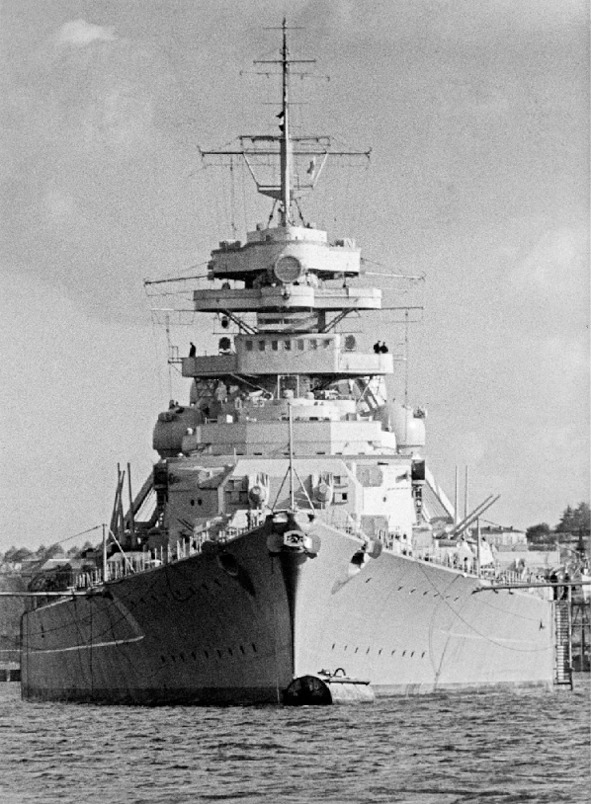
The German battleship «Bismarck», the largest ship of its time. The displacement curb – 50 000 tons (two times higher than that of the aircraft carrier), length 251 meters, width 36 meters, draft 10 meters. The maximum speed of 55 km. hours, autonomous navigation range of 17 000 km. The main armament is eight 380 mm. cannons in four towers.
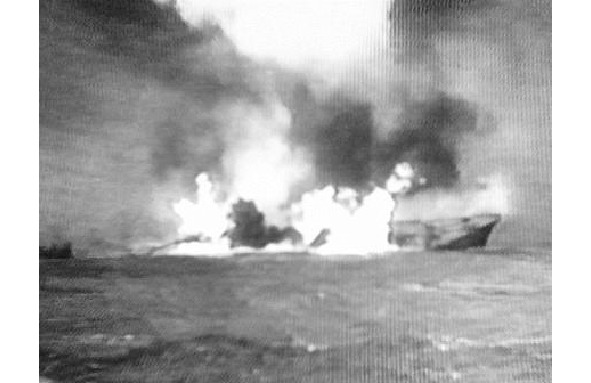
In the evening, the same on May 24, 1941, the Bismarck receives a torpedo into the board from one of the seven Suordfish torpedo bombers that took off from the deck of the approached aircraft carrier. The British extremely painfully perceive the death of the «Hood» and intend to by all means get rid of the battleship. The torpedo gets into the armored belt (145—320 mm.) And does not produce any particular effect. Sailor dies. The air attack is repeated on May 25, more successfully. One of two or three torpedoes damages the steering, so that the ship begins to describe the circulation (moves in a spiral). In this state, «Bismarck» has to take the battle with two battleships, a heavy cruiser and several destroyers. German submarines do not have time to come to the rescue. Photography is the last minutes of a superlinked flame.
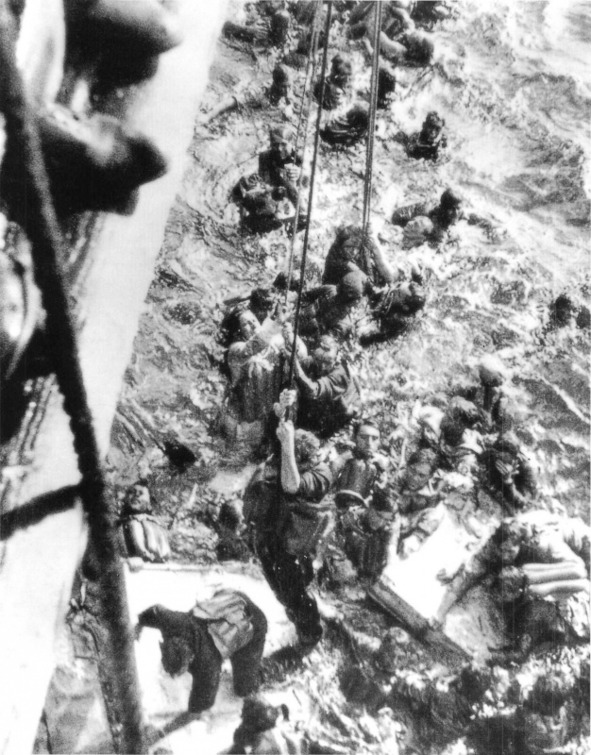
The roll negatively affects the accuracy of the Bismarck. British shells destroy the main ranging post and damage the tower. English heavy cruiser hits superlinkor with three torpedoes. The ship flips up the keel. Out of 2,220 people, 114 are saved (three are taken up by a German submarine that has approached). Since then, the German command covers the strike force of the surface fleet, especially in the winding Norwegian fjords. German kriegsmarine go to the tactics of unlimited submarine warfare. If before, before sinking the transport vessel, the crew of the submarine was obliged to give the appropriate signals, wait until the seamen sail into the boats, now there are no such tenderness. Photography – the surviving sailors of the Bismarck ascend a British ship
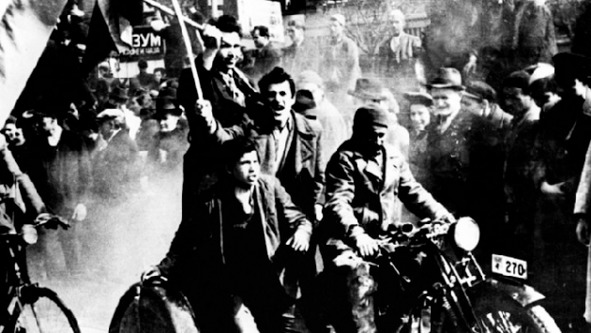
The Prime Minister of Yugoslavia signs the protocol on the accession of his country to the Tripartite Pact, March 25, 1941. On the same day, an 80,000-strong demonstration against the alliance with Germany is held in Belgrade. Above all, it is marked by the defeat of the German Information Bureau. A new government is being formed. Already on April 5, the USSR and Yugoslavia signed a treaty of friendship and non-aggression. These events, Hitler sees as a reason for the invasion. And, on April 6, the armed forces of Germany, Italy, Hungary attack Yugoslavia. Stalin to assist the allies, in accordance with the concluded agreement, is in no hurry. 2000 tons of bombs fall on Belgrade, and on April 16 the Yugoslav army capitulates. About 344,000 people are captured (Croats, Hungarians and Germans are later released). Irretrievable loss. Germany: 165 people, 40 aircraft, 3 tanks. Italy: 3300 people, 13 aircraft, 11 tankettes. Hungary: 130 people, 1 plane. Yugoslavia: 5,000 military, 57 shot down, 150 planes destroyed on the ground. In the photo – the Yugoslavs celebrate the signing of a treaty of friendship with the USSR, April 5, 1941.
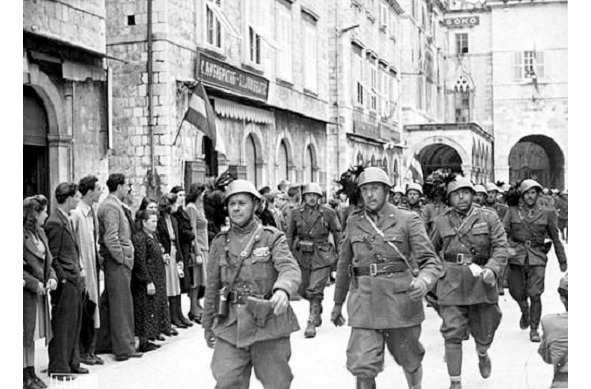
Italian Bersaliers (arrows of elite units) in the street of the Serbian city, April 1941

For some reason, the capture of Yugoslavia prompts Hitler to provide more effective assistance to the Italian allies. And, on April 6, 1941, from the territory of Bulgaria, German troops invade Greece. Athens surrenders on April 27th. After three more days Greece surrenders. A month later, the Wehrmacht occupied the island of Crete, considered primarily as an airfield to control the waters of the Mediterranean. Photography – Greek city after shelling. April 1941
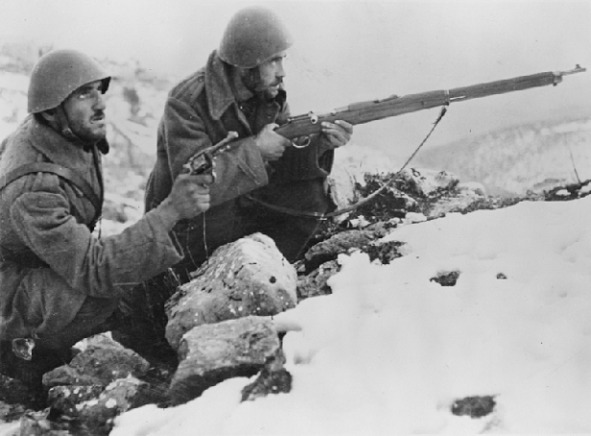
Brave but poorly armed Greek soldiers prepare to meet German troops. April 1941, Greece
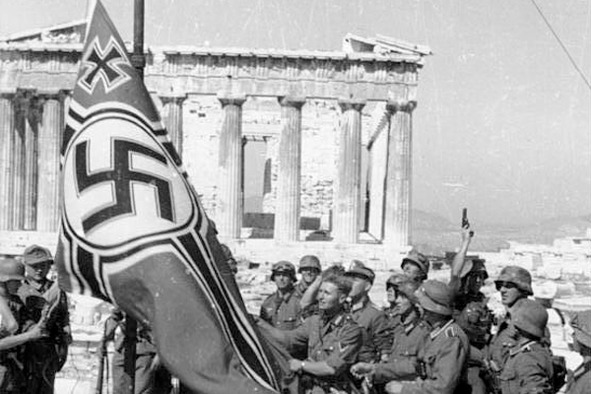
Serious losses among parachutists do not allow further operations to capture Cyprus and the Suez Canal immediately. Losses of Greece: 14,000 killed, allies – 900, with 14,000 prisoners. The Wehrmacht is losing 1,500 soldiers, Italy is about 20,000. It is believed that the need to seize Yugoslavia, as well as the stubborn resistance of Greece, postponed the time of invasion of the USSR from May 15, 1941 to June 22, and these five weeks had a decisive effect on the course of the war. Photography – German soldiers deployed a flag near the Acropolis. May 1941






